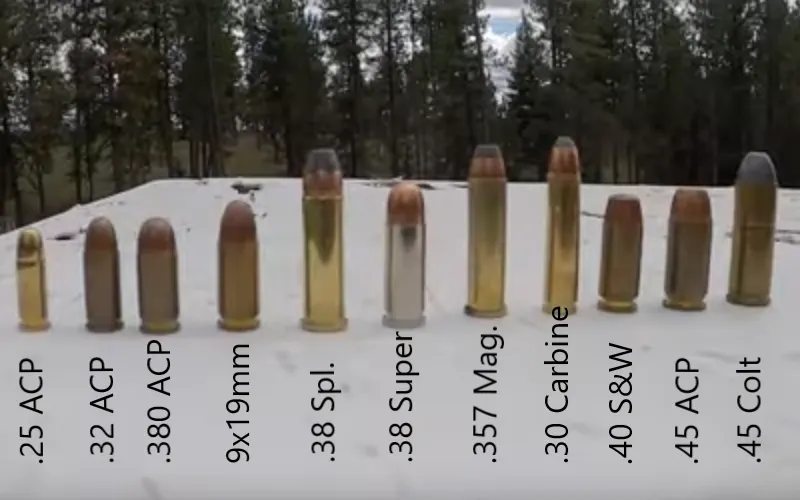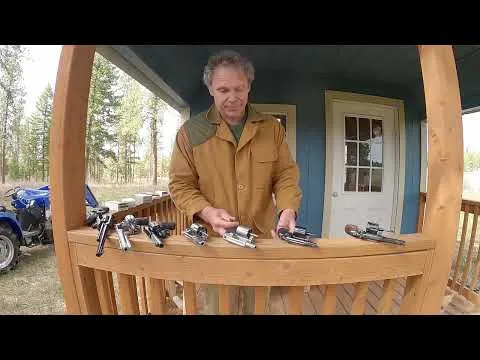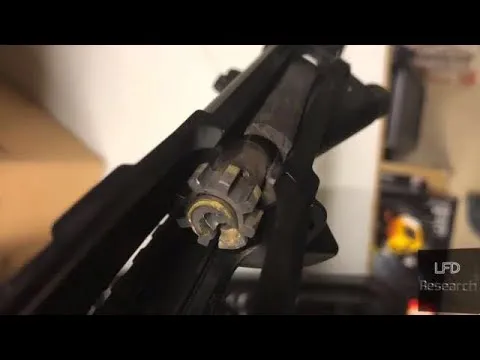There are a lot of cartridges on the market, and a lot of guns to shoot them. As a general rule, only use the caliber and cartridge specified on your firearm. That said, some rounds are definitely interchangeable.

Screenshot from the video below, cropped and labeled by me.
For example, a .357 Magnum can safely fire the lower-pressure .38 Special from which it was derived. There may be a loss in accuracy, or the point of impact may shift, but there is no safety hazard because .38 Special is from the tail end of the black powder era. While it quickly transitioned to smokeless powder, it still generates much lower chamber pressure than the later .357. That is why the longer magnum case was introduced to prevent these spicy rounds from fitting into .38 Special guns. A friend of mine had an old Colt .38 that would accept a .357 case, so it's not completely foolproof. You absolutely must know what your gun can feed, and what you are feeding your gun. Pay attention to the caliber markings on the gun and those cartridge headstamps!
I would also like to mention Paul Harrell's recent video on another specific odd question of interchangeability. Can a .38 Super be fired from a .38 Special or .357 Magnum? The answer is a definite maybe. After all, there are a few .357 revolvers designed to accept a 9x19mm by swapping cylinders and/or using moon clips to get around its lack of a protruding rim at the base. Its .355" diameter bullet is close enough to .357 to still engage the rifling. .38 Super is supposed to be .355" as well, so it's an option, too, right? Well...
Speaking of those caliber markings, though, be extra-careful with historical firearms. For example, "9mm" may refer to several different cartridges depending on when, where, and for whom the firearm was made. In the modern context, it means 9x19mm Parabellum, also known as 9mm NATO or 9mm Luger. Many guns, especially those made before and during World War II, may be marked "9mm" in reference to .380 ACP, also known as 9mm Kurz/Corto/Browning/Short or 9x17mm. There is also the Russian 9x18mm with a slightly larger bullet diameter because of course the Russians had to be weird. Then there's the 9x23mm Largo used mainly in World War I pistols, and more modern 9x21mm often found in countries which prohibit civilian ownership of firearms chambered in a military 9x19mm. And to top it all off, there's the sneaky 9mm Glisenti which is absolutely identical to standard 9x19mm except for powder charge, so a Glisenti loaded with a standard 9x19mm round which otherwise fits perfectly has a high chance to turn that handgun into a surprise hand grenade.
Another potential issue is exemplified in modern sporting rifles chambered for .223 and 5.56x45 NATO. These rounds are almost identical, but slight geometric differences in chamber design and cartridge specifications may result in problems in some guns. The .223 Wylde chamber is designed to be completely cross-compatible between the two rounds. Exacerbating this possible issue is the .300 Blackout cartridge, which fits in the same magazine and may even chamber in a standard .223/5.56 rifle with catastrophic results. Fortunately, modern magazine-fed rifles offer a pressure relief path through the magazine well, reducing the odds of shrapnel in your face, but it's bad no matter what. If you fed .223 into a .300 Blackout barrel, you'd likely get no accuracy whatsoever because the bullet wouldn't properly engage the rifling, and the case may split and prevent proper extraction, but at least there shouldn't be a kaboom. Don't do it, though, not even to test my theory.
There are many other cartridges based on more common rounds necked up or down to change the bullet and ballistics, so this is hardly a unique example. Don't mess about with any of them. Those caliber markings are there for a reason, and should not be disregarded unless you are absolutely sure the cartridge change is safe. Research reputable sources. Consult your gunsmith.
Shooting is fun. Guns are useful tools. They are also very dangerous if misused. Always read and follow caliber markings unless advised otherwise by your gunsmith. If you're reloading ammunition, pay close attention to your powder choice and load tables. With great power comes great responsibility, so be careful out there, friends. What specific hazards have you heard of or personally observed where a gun can be rendered extremely unsafe by an ammunition mix-up?



